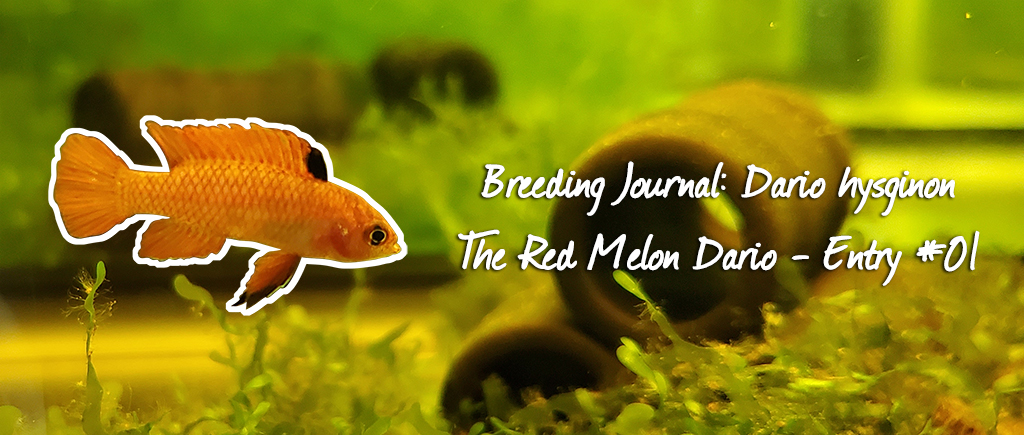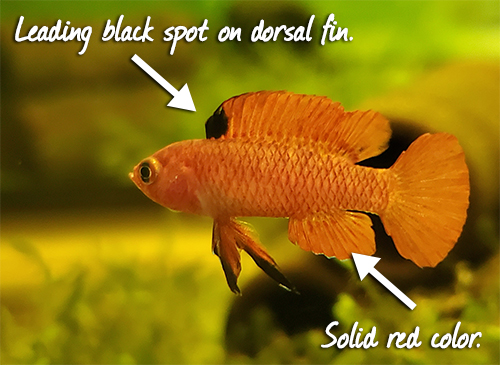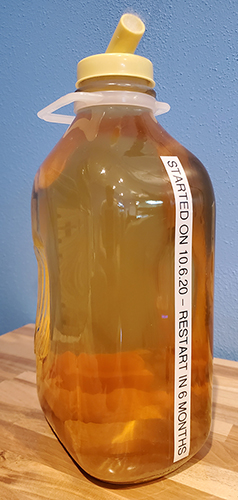
Breeding Red Melon Dario the flashy micro predator
I’ve been squatting on a group of Red Melon Dario since July of 2019. As hobbyists I think we all commit to things with good intentions, but don’t always follow through with our original plans. Here we’ve got a classic case: life gets busy, other priorities creep in and our plans go awry. It’s all too common, at least in this fish room.
Well I’ve finally settled into a concerted effort to breed this group of fish. It was purchased as “Dario dario”, also known as the Scarlet Badis. I was armed with a bit of information on behavior and general care when I purchased them, however I didn’t know anything about breeding them. After searching YouTube and Google I found only one detailed write up on a separate sub species. You can find that here:
Dario hysginon: Breeding and Husbandry of the Red Melon Dario
By: Sumer Tiwari
The case of missing identity

After a light read through Sumer Tiwari’s blog article, I realized this was the same species I had, Red Melon Dario! The seller misidentified the group I purchased. My male fish are a solid red color. They also have the characteristic leading black spot on their dorsal fin which you don’t find with Dario dario and is present with Dario hysginon.
With that discovery I had a great article to start with. More importantly the article has some critical information about fry rearing. Armed with that additional information I was ready to give it a go.
I had seven fish total. Two dominant males, two that I believe to be sub dominant males and three females. I chose to separate them into three tanks. The two dominant males were kept in the original tank. Two subdominant males were rehomed in their own tank, and the three females into a third tank.
– Cause and effect
- By making this separation I could condition the females for breeding undisturbed. This would eliminate undesired breeding which might not be timed well with my ability to raise fry yet. It would also keep the females in top condition for when I was ready. Additionally, if I was incorrect about my identification of three females one would color up and show themselves as a male. At that time I could correctly segregate them.
- The subdominant males would also be better served in their own tank. Here I could allow them to condition better with less harassment from the two dominant males. Being able to spread out the aggression between two tanks would ensure I could sell at least a pair from this original group if I was able to breed and raise fry successfully. Finding a pair of Dario is still rare in the hobby. Selling a known pair would surely help recoup my initial investment.
- I wasn’t entirely sure which of the two dominant males was the better fish. Leaving just the two together would give me clearer guidance. Removing the ability to spread the aggression across the whole group would allow me to determine the hierarchy which couldn’t easily be done with the entire group together.

Here you can see the two dominant males displaying to each other.
Fat & Happy
Before and after the separation, I have been feeding freshly hatched brine shrimp. These guys are micro predators. They appreciate live, wriggling snacks that can be hunted down and will clear out huge masses of them quickly. I’ve heard it can be easy to over feed them, but this brine shrimp hatching dish makes it impossible for me to over feed. It produces just enough brine for two feedings and any extra is used as a treat for other fish. I typically feed 1/3 of the catch cup to each tank. Sometimes I reserve more for the females when I am able to hatch more frequently. Their diet is the most important as they need the protein to develop eggs.
Picky eater
I plan to take thirty days to condition these fish. This conditioning will occur all prior to the first reintroduction of a female and male pair. This timeline is tied to my preparation of vinegar eels, I have read that vinegar eels are a preferred food of tiny fry, a necessity I identified from the article mentioned earlier. It’s not something I have needed to do in the past. In part because I’ve not breed fish this small. The adults grow to short of one inch, and the fry are truly tiny. I need tiny food available for the fry shortly after they hatch and consume their egg sack. That said, culturing of the vinegar eels is already underway. I chose a heavy duty milk bottle to start that culture.

Here is my starter culture. I used a label printer to date it so I can be sure of when to restart it. I plan to harvest the vinegar eels with a coffee filter. This will allow me to rinse them, ensuring I introduce as little vinegar to the aquarium as possible. You can find a good video on the process from Greg Sage of Select Aquatics. Click here to check that out: How to rinse vinegar with home-made ingenuity
Purchasing a starter culture of vinegar eels can be done across the internet. I see some real potential value in keeping this culture around long after my attempts to breed the Red Melon Dario. Time will tell, but I read these cultures can go 6 months before needing to be refreshed. In addition they don’t spoil like other worm cultures, so I can be lax in my maintenance. That’s a huge plus for me! You can read a step by step process about how I produced this culture here: How to culture Vinegar Eels
Love nest
At the end of 30 days I plan to introduce a pair to each other in a breeding box which will rest on the female’s tank. This breeding box will have a fair amount of java moss inside it. I plan to introduce them for just one day. Then I’ll remove the pair and place them back into their respective tanks. This will give the eggs a chance to hatch, and fry to emerge without the risk of predation. From my reading it doesn’t seem that the fish will eat the eggs, but will eat the fry once they hatch. Removing the pair will insure if breeding has happened that we’ll get a chance to observe and spot fry. Hatching is supposed to occur two to three days after the introduction.
In addition to providing a separate spawning area, the breeding box will also lower the water volume I am working with once the fry hatch. This way I am able to target feed more effectively with the vinegar eels. This will stretch out my culture and also give the fry a better chance of locating a meal once I’ve dosed it into the water. Ideally the breeder box will prevent having to over saturate the water column with food and lead to a higher chance of successful feeding.
– Further Consideration
In the future, I could see cycling multiple females into the breeder box with the male to acquire the largest hatch possible. In that scenario, I’d split the twenty four hour day up between the females I have available. I can see this being a more effective way to raise a large brood for resale. However, on this initial attempt I’ll just pair one male and one female and gauge the success. I don’t know much about the market for these nano fish and don’t know how many fry we should expect if successful. That said if this is very successful it might take an effort of both retail and wholesale sales to move larger amounts of fry. Only time will tell!

Written By Marshall Joas – Owner & Operator of InvertzFactory.com
Marshall runs the day to day operation of the fish room. Packs the orders and answers all the emails! He is passionate about sharing his journey in the fish room and providing quality pets to this amazing hobby.

